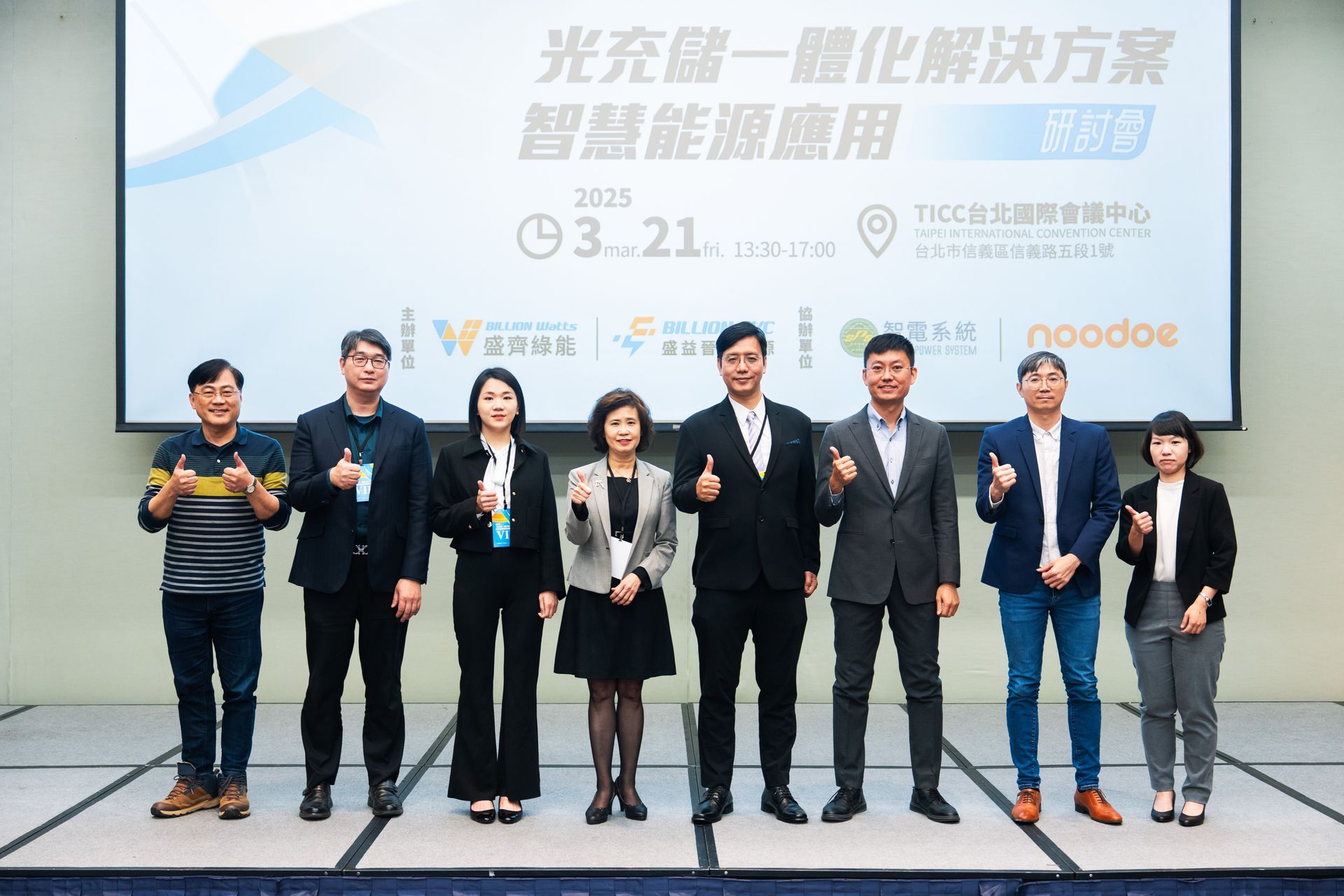Energy Storage Supports Power Supply Stability, Urging Society to Support Power Infrastructure Development
2024 Apr 25
Energy storage systems are capable of managing peak electricity demand, helping to stabilize the power grid. They also play a crucial role in safeguarding the grid during critical moments, preventing potential power outages and enhancing grid resilience. These systems contribute to both stable power supply and sustainable development.
Taiwan has actively participated in Earth Day events every year, with the energy industry continuously promoting related activities to champion sustainability and protect the planet. Together, they declare their commitment to achieving net-zero emissions by 2050. The recent 4.03 magnitude earthquake caused power shortages in Northern Taiwan, with energy storage systems across the country stepping in to help stabilize the grid. Taiwan Power Company (Taipower) implemented measures such as pumped storage hydropower, time-of-use electricity pricing, auxiliary services, and demand response initiatives, purchasing electricity from large consumers to navigate the blackout crisis.
The government’s recent green energy policies and energy storage developments have had a positive impact, ensuring a more reliable power supply during peak hours. Daytime electricity generation is supported by renewable energy, while nighttime power is supplemented with energy storage batteries, hydropower, and gas units. This, combined with new time-of-use pricing and voluntary energy storage participation in demand response programs, enables efficient use of renewable energy and addresses its intermittent nature. This highlights the importance of energy storage systems and the stabilization of regional power grids, with a call for public support in building energy storage infrastructure.
Energy Storage Systems Pass International Certification and Enhance Fire Safety Guidelines
In recent years, there has been significant advancement in fire safety and safety certification for energy storage systems, including the certification of battery cells, modules, cabinets, and entire energy storage containers. These systems must meet the international VPC certification and comply with the CNS 62933-5-2 technical verification standards. Many energy storage products also obtain the IEC 62933-5-2 and UL9540A large-scale fire retardant testing certifications, which represent the highest safety standards for energy storage systems. Additionally, these products must adhere to the International Electrotechnical Commission's standards and undergo verification based on technical specifications for outdoor battery storage systems as outlined by the certification bodies. These standards include design, material safety, verification testing, voluntary testing, and must also comply with fire safety management guidelines established by the Ministry of the Interior's National Fire Agency, ensuring safety measures like firewalls with a fire resistance time of over two hours, along with sprinklers, fire hydrants, and specialized fire extinguishers for lithium batteries. The systems will undergo maintenance and verification every two years to ensure operational safety.
Energy Storage Systems Meet IEC/EN 61000 Electromagnetic Compatibility Standards
The impact of electromagnetic waves is omnipresent, with devices that use electricity, such as mobile phones, computers, and hairdryers, generating electromagnetic waves. According to current regulations, energy storage systems must be located at least 30 meters from residential buildings. The electromagnetic waves emitted by energy storage systems diminish with distance, and their effect on the surrounding environment is minimal. Furthermore, energy storage systems must comply with electromagnetic compatibility standards, with periodic measurements of electromagnetic emissions to ensure they do not cause harmful interference to the environment.
Lithium Iron Phosphate (LFP) Batteries Pass Strict Penetration and Internal Short Circuit Tests Without Igniting
Numerous studies on the safety of lithium iron phosphate (LFP) batteries, including puncture tests, show that the batteries emit only minor smoke without catching fire. This is due to the characteristics of LFP batteries, which generate less heat during a short circuit and dissipate heat more efficiently. Energy storage systems today use batteries that undergo strict certification and supervision, with 24/7 monitoring of battery cabinets and operational conditions. If temperatures exceed safe levels, the systems automatically shut down. Additionally, if a water-cooling system is used, the batteries are submerged in coolant, reducing the risk of explosion or fire. The space between containers is kept at 3 meters to ensure adequate ventilation, preventing fire hazards.
Industry experts state that grid-connected energy storage systems should be built on industrial land and supported by comprehensive 10-15 year operational management and maintenance plans to ensure environmental and community safety. Although many regions remain cautious about energy storage development, ensuring a stable power supply is not solely the responsibility of the government; it requires a combined effort from the private sector. The public is encouraged to support the construction of energy storage systems to help maintain a robust energy environment and promote a sustainable green energy future.










